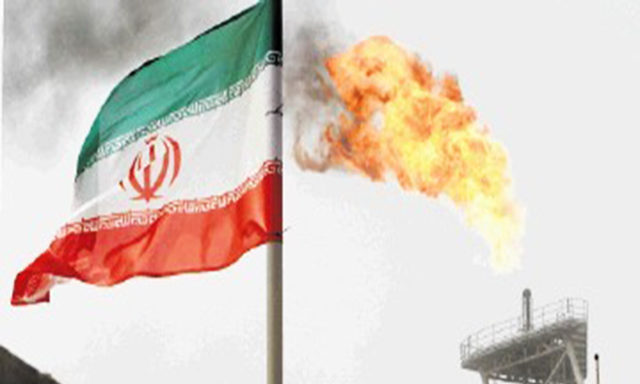
As Iran nears a deal to ease oil sanctions after almost two years of talks, selling more crude remains a long way off.
The nation’s goal of increasing exports 50 percent as soon as restrictions are lifted won’t be fulfilled, say Goldman Sachs Group Inc., Bank of America Corp. and Societe Generale SA. That would require an extra 500,000 barrels of daily output, which the banks say will take six to 12 months as OPEC’s fourth- biggest producer complies with terms of a deal and revives aging wells. The impact on prices will be limited, the banks predict.
“They’ve got to meet the requirements of any agreement, and that’s going to take time,” Jeff Currie, head of commodities research at Goldman Sachs, said by e-mail from New York on Monday. “When you shut these fields in to that significant of a degree, your ability to bring back production to previous levels will be limited because you’ve done damage to the fields that will require significant investment.”
The U.S. and five other global powers seek an agreement with the Persian Gulf nation to curtail its nuclear program in exchange for removing sanctions that have squeezed its oil trade and economy. Iranian oil exports have plunged 46 percent since 2011 as a result of the restrictions, according to the U.S. Energy Information Administration.
Deal Approaches
Diplomats in Vienna are close to clinching the historic agreement, with both sides having shown the “political will” to finish drafting a long-term accord, European Union foreign policy chief, Federica Mogherini, said June 28. Iranian Foreign Minister Mohammad Javad Zarif rejoined the talks Tuesday, saying he was there “to get a final deal.” The negotiations, now in their 21st month, have been extended to July 7 from June 30.
Oil prices have lost about 45 percent in the past year as Saudi Arabia, Iran’s rival for political sway in the Persian Gulf, leads the Organization of Petroleum Exporting Countries in an effort to defend market share by pumping more oil. While the announcement of a deal would trigger a “knee-jerk” price drop, the slow pace of restoring exports would damp the impact, Societe Generale predicts.
Brent oil, the global benchmark, slid 0.8 percent to $63.07 a barrel on the London-based ICE Futures Europe exchange at 11:53 a.m. Singapore time on Wednesday.
U.S. and European officials said after an interim accord on April 2 that restrictions will only be phased out gradually, and will be contingent on Iran’s cooperation with inspections by the International Atomic Energy Agency. That verification process will take from six months to a year, U.S. Secretary of State John Kerry said.
More Oil
Iran can add 1 million barrels a day to exports within seven months of sanctions being lifted, re-attaining its pre- sanctions capacity, Iranian Oil Minister Bijan Namdar Zanganeh said at an OPEC meeting in Vienna on June 5.
That won’t be possible without substantial investment by foreign oil majors, who will be reluctant to re-enter Iran before the legal implications are clear, said Harry Tchilinguirian, head of commodity market strategy at BNP Paribas SA. The country aims to add a further 1 million barrels of daily capacity eventually, Zanganeh has said.
If Iran could deliver the extra oil it hopes to, it would effectively double the global surplus that’s already projected for the rest of the year.
Stored Crude
While restoring production from Iranian oil fields will be slow, the country has stockpiled crude on tankers that could hit the market more quickly, after IAEA inspectors certify compliance with terms of an agreement, Bank of America said. The country has nine vessels, probably laden with about 19 million barrels of crude, moored off its coast, according to London- based Bloomberg oil strategist Julian Lee.
“That will hit the market almost immediately, or over the course of a few weeks,” said Francisco Blanch, Bank of America’s New York-based head of commodities research. A deal “puts additional downward pressure on prices” by prolonging the global oil surplus for about six months, Blanch said.
Expectations for additional Iran crude are more muted than they were before the accord reached in April, which clarified the pace of Iran’s potential return, said Societe Generale’s Mike Wittner.
“It’s really a 2016 issue for the oil market,” Wittner said by phone from New York. “By the second half of next year the market may be able to absorb the additional Iranian crude without too much of an issue. This is not slam-dunk bearish.”
Recommended for you
